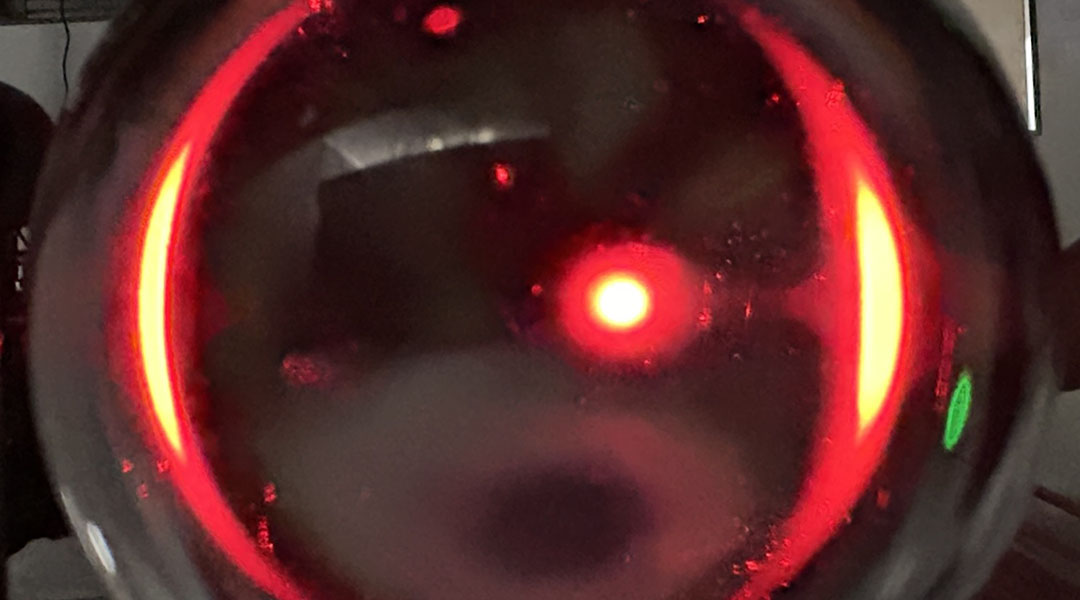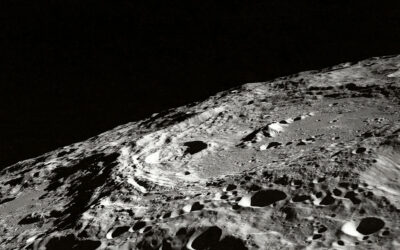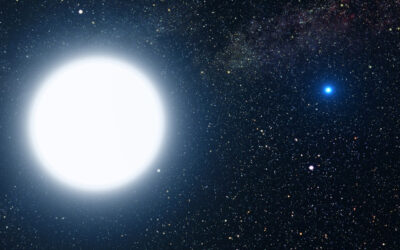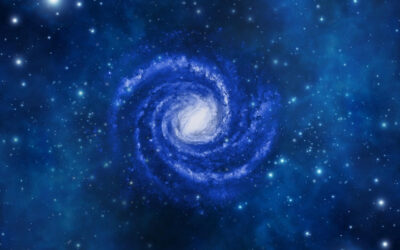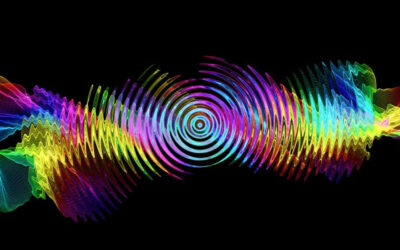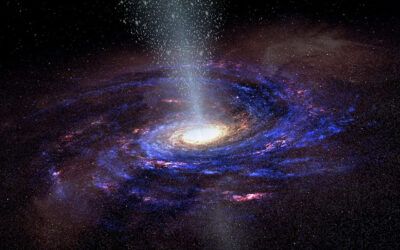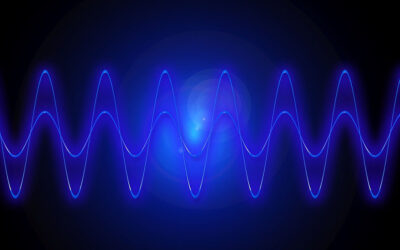For the first time, researchers have successfully recreated the subtle effects of gravitational lensing — a phenomenon where light is bent by the gravitational pull of a massive cosmic object, such as a black hole or galaxy — in three dimensions in a lab using a carefully designed configuration of optical lenses.
“We’ve overcome the constraints imposed by the observational conditions in astronomy,” said Jin-hui Chen, an associate professor at Xiamen University in China. “As a result, we can explore [these effects] under a much broader range of scenarios, thereby significantly expanding the frontiers of research in this area.”
Gravitational lensing was predicted by Einstein’s general theory of relativity and occurs when a massive object, such as a black hole or galaxy, is located between a light source and an observer on Earth. It is a powerful tool for understanding the Universe, allowing astronomers to study distant objects by magnifying their light, measure the mass of lensing objects like galaxy clusters or black holes, test general relativity by observing how light bends around massive objects, investigate the early stages of the Universe, and even detect exoplanets by observing their gravitational effects.
The team led by Jin-hui Chen and Huanyang Chen were able to replicate a specific pattern of light distortion created by gravitational lensing known as an Einstein ring. This occurs when a massive object, like a galaxy or black hole, is perfectly aligned between a distant light source and an observer, bending the light into a perfect circle. In the past, outside of astronomical observations — due to the stringent requirements of recreating these systems — this phenomenon was possible to observe through theoretical models.
Now, with the ability to replicate them on demand, Chen and his team hope to gain deeper insights into the structure of the Universe, including long-sought after mysteries like dark matter and dark energy.
“Our method may be useful [in simulating] other phenomena, such as black hole horizons [as well as the] strong gravitational lensing effect,” Chen said.
Mimicking black holes and galaxies with optical lenses
Studying gravitational lensing itself is challenging due to the vast distances the celestial objects involved and Earth.
“In astronomical observations, observing the phenomenon of light bending to form perfect Einstein rings is fraught with challenges,” explained Chen. “Highly sophisticated instruments like the Hubble and Webb Telescopes are essential. However, even with these advanced tools, searching for gravitational lensing systems where the light source, gravitational lens (a massive celestial body), and the observer are precisely aligned remains an arduous task. Such perfectly aligned configurations are exceedingly rare in the vast expanse of the Universe, making the opportunities for direct observation scarce.”
However, in the past, researchers have found that the behavior of light in a gravitational field is analogous to light passing through an optical lens, allowing scientists to recreate gravitational lensing effects in a controlled environment.
“The gravitational field around a massive object bends light and creates Einstein rings,” Jun-liang Duan, a researcher at Xiamen University in China, explained in an email. “Optical lenses, on the other hand, use their refractive properties to bend light. Consequently, the Einstein ring phenomenon can be simulated by an optical lens with proper geometrical structures.”
While the theoretical groundwork has been well-established, experimental validations have been limited. Previous studies simulated lensing in simplified setups, such as when the source, lens, and observer are perfectly aligned. However, real-world scenarios are far more complex, as the source and a gravitational lens are rarely arranged in such a straightforward manner.
To expand the range of gravitational lensing phenomena that can be studied using this optical analogy, the group turned to studying more general setups in which not all of the participating objects are perfectly aligned.
“This approach allows for the arbitrary adjustment of the relative positions of the light source, lens, and observer,” said Jin-hui Chen. “By doing so, we overcome the constraints imposed by the observational conditions in astronomy. As a result, we can explore Einstein rings under a much broader range of scenarios, thereby significantly expanding the frontiers of research in this area.”
Simulating complex lensing patterns
To mimic gravitational lensing, the team used a light-emitting diode whose light passed through a hemispherical lens before entering the camera, and studied how the picture changes as they vary the setup parameters.
For perfectly aligned setups, the researchers observed a clear Einstein ring. However, when the light source was shifted off-axis, the symmetrical ring distorted into patterns resembling those seen in actual astronomical observations, validating the analogy between gravitational and optical lenses.
“Intriguingly, […] a similar symmetry-breaking Einstein ring via the gravitational lens has been observed,” the scientists noted, referencing real-world observations of the lensed quasar MG1131+0456, discovered in 1988. This quasar forms an asymmetrical pattern with two optical spots on opposite sides of the lensing object.
To simulate the effects of uneven mass distributions in gravitational lenses, such as those seen in elliptical galaxies or spinning black holes, the researchers replaced their hemispherical lens with a hemi-ellipsoid lens.
This modified lens produced an Einstein cross, with four distinct images of the light source arranged around a central spot — a pattern frequently observed in real gravitational lensing events.
“To the best of our knowledge, this is the first optical emulation of the Einstein cross utilizing a symmetry-breaking lens,” the team wrote in their paper.
These experiments confirm the similarity between light propagating through an optical lens and the bending of light in warped spacetime around a massive object. The significance of these experiments being their ability to bring the complex phenomenon of gravitational lensing into a laboratory setting, allowing scientists to better study it in a controlled environment.
Future directions for simulating lensing effects
While this study marks a major step forward, it also underscores the challenges and limitations of using optical lensing analogs to fully capture the complexities of gravitational lensing. Despite the exciting possibilities, these lab-based models can only go so far in replicating the vast, unpredictable conditions of the cosmos.
“Currently, we can only perform semi-quantitative analysis of hemi-ellipsoid lenses,” said Duan. “In order to more accurately predict the symmetry-breaking Einstein cross pattern, it is urgent to develop new analytical methods to improve the accuracy and depth of the study.”
In addition, the lenses used in the experiments only deflected light by up to 40 degrees. In reality, light passing close to a black hole can be bent so severely that it loops multiple times around the object before escaping. To replicate such strong gravitational lensing effects, more sophisticated lenses with advanced internal structures would be required.
“Optical lenses with inhomogeneous media can produce more complex beam dynamics,” the researchers noted. Therefore, in addition to the simulation of weak gravitational lensing, future research could extend to the strong gravitational lensing effect.” said Huanyang Chen.
By advancing these techniques, scientists could explore more extreme scenarios, such as light bending near supermassive black holes or within the chaotic environments of galaxy clusters. These simulations could also help refine models of dark matter distribution and test the limits of general relativity in novel ways.
Reference: Jun-Liang Duan et al, Mimicking Symmetry-Breaking Einstein Ring by Optical Lens, Advanced Photonics Research (2025). DOI: 10.1002/adpr.202400203

